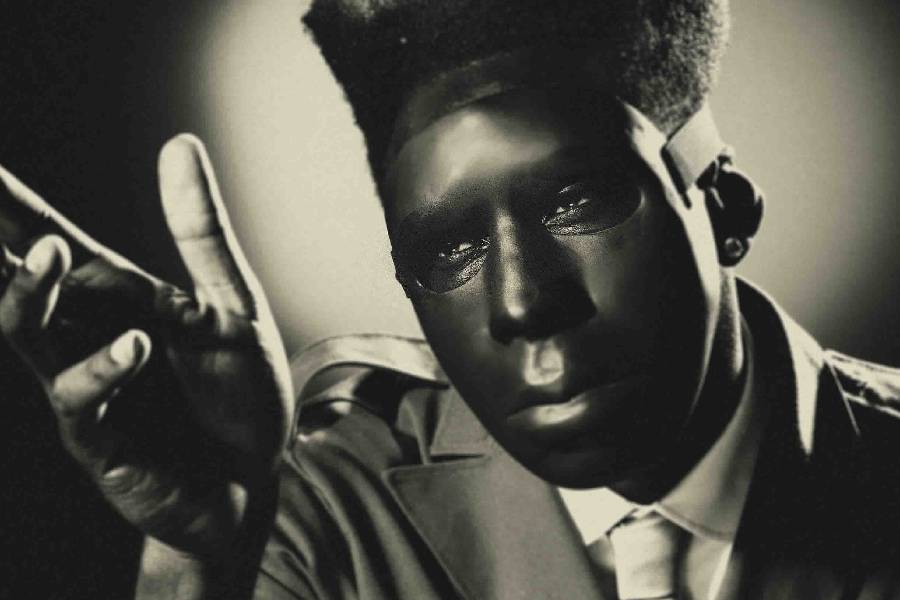The beauty of music is that it can encapsulate human emotions in a way that no other art form can. No matter what you are feeling, music can be a form of expression when you are crying, laughing, fuming and, of course, when you are in love. For what seems like forever, music has been an essential part of people’s love stories. Today, couples exchange playlists filled with romantic, sentimental songs. Before the age of Spotify and Apple Music, there were Valentine’s Day CDs. Before CDs, there were custom cassettes. Before cassettes, there were records … and on and on it goes.
But what classifies a song as a “love song”? What do the songs on these playlists, CDs, cassettes and records all have in common? According to Billboard, the simplest way to identify a love song is a song with the word “love” in the title. Billboard did a ranking of the top 50 most popular songs with love in the title based on chart toppers. The top three on this list were 1) “Endless Love” by Diana Ross & Lionel Richie (1981); 2) “I’ll Make Love to You” by Boyz II Men (1994) and 3) “How Deep Is Your Love” by Bee Gees (1977).
Throughout these songs, there are a host of overlapping themes and images. There is a consistent idea of “forever love,” where the singer expresses how their feelings are eternal. All of the songs are also filled with physical descriptions of the love interests, many of which center around eyes. For example, in “Endless Love,” Lionel Richie and Diana Ross sing, “And your eyes, your eyes, your eyes / They tell me how much you care.” Another piece of imagery featured in these songs is holding someone tight, painting a picture of someone who never wants to let go of their loved one. This further supports the theme of commitment and eternal love. There is a simplicity to the lyrics in these songs, the singers focused solely on the perfection of their love. In these songs, nothing else matters except the two individuals and their adoration for each other.
Musically, all three of these songs evoke similar feelings. They are on the slower side with a mellow drumline. “Endless Love” is a duet, but even with the other two songs featuring one soloist, there is a choir-like feel, marked by layered vocals and harmonies. All of the songs also feature strings that build as the song moves from verse to chorus. These common musical elements create an indescribable sound — the sound of a cheesy, old-timey love song.
Among these similarities, there is another one that stands out: the age of these songs. They were all released before the 21st century — before streaming services, before social media, before the age of Gen Z and Millenials. This begs the question, is nostalgia a key piece to love songs? And to go a step further, are there the same types of love songs today?
According to an article published by Variety, “All of Me” by John Legend (2013) was the most streamed love song on Spotify as of 2020, with 1.1 billion streams. This 21st-century anthem has notable differences from its predecessors. Rather than being filled with slow, groovy drumlines, Legend opts for a more acoustic feel with stripped-down vocals and piano. Instead of featuring chorus-like harmonies, it is mostly melody with a simple harmony line added to the last chorus that many listeners may not even notice.
Lyrically, the song also tackles more complex aspects of love. It is not just about how good love feels, but also about how love can make you feel crazy. Furthermore, the song expresses that the singer recognizes flaws in their love interest but loves them all the more for them through lyrics like, “Love your curves and all your edges / All your perfect imperfections.” There are still common ties to the nostalgic classics, like the idea of endless love and commitment.
Today, there are less love songs than ever. From 1978-1982, 12-14% of all songs had love in the title, whereas only 5-6% of songs from 2008-2012 had the word love in them. And for songs about love that are released, they are not depicting the same perfect love stories that defined the ’70s and ’80s. There are countless songs on heartbreak, “situationships” and the feelings surrounding love, but finding a “pure” love song from this decade is a challenge. For example, last year’s hit “Bad Habit” by Steve Lacy (2022) talks about the frustration of wanting to tell someone how you feel but not quite being able to. The newly released “Bad Idea” by Olivia Rodrigo (2023) talks about being with someone who you know is bad for you. Are both of these songs about romance? In some sense, yes. But are these love songs? That is questionable.
So to answer what makes a love song, there may be no clear-cut answer. In the 1970s–1990s, it could be argued that there was more of a formula. Write some idealistic lyrics with cliche imagery about how beautiful someone’s eyes are, add choir-like harmonies and tie it all together with a swelling string section — now there is one more nostalgic love song people can add to their Valentine’s Day playlist.
But today, that formula doesn’t necessarily hold up. Musicians are writing about the realities of love, the highs and the lows. Whether that comes from a skeptical view on love or musicians writing with a more honest pen, it’s hard to tell.
But regardless, it’s creating a shift in the relationship between love and music. And just maybe, this could create a shift in the relationship between love and society, too.















